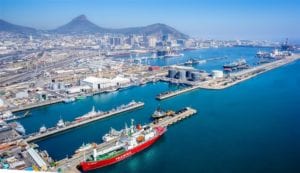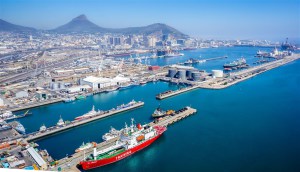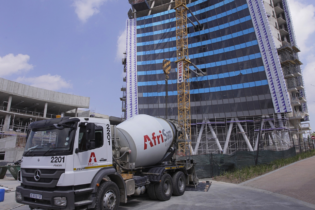Unlocking our oceans
According to Ricky Bhikraj, executive manager of capacity and enablement, South Africa is lagging behind in terms utilising ports to grow the economy. South Africa’s Operation Phakisa was announced by Jacob Zuma in in 2014 to do just that. “South Africa is gifted with more than 3500 km of coastline and we are only now discovering that,” said Vallihu. The Oceans economy is now recognised as a new driver for economic growth and job creation. According to Bhikraj, Operation Phakisa has the potential to contribute between R14 and R23 billion to the GDP and to create 40 000 to 50 000 jobs by 2019.Building port infrastructure
TNPA is in the third year of its market demand strategy. Under this strategy, the ports authority aims to create and manage infrastructure capacity ahead of demand. There is therefore a continued focus on infrastructure creation and maintenance. Selvan Pillay, senior manager of planning and development, highlighted some of the future plans for ports infrastructure. Richards Bay: the Port of Richards Bay is South Africa’s premier bulk port. Major growth areas for the port are seen to be dry bulk, liquid bulk and break bulk cargo handling. The primary challenge for the port is to accommodate growing demand for handling bulk cargoes. This is to be achieved by means of the Port Capacity Expansion Project in the Bayvue precinct.A potential future development will be a dedicated ship repair facility, and a gas (LNG) import facility to supply gas for the conversion to power. Allowance will also be needed for additional liquid bulk freight.
Durban: the Port of Durban is South Africa’s premier container port. Major expansion projects in the short term include deepening and lengthening of the North Quay and infill at Pier 1 of DCT, berth reconstruction and deepening at Island View and Maydon Wharf, and development of a new dedicated passenger terminal. East London: the Port of East handles primarily industrial and agricultural cargoes, with a particular focus on servicing the local automotive industry. The port is restricted in both width and depth, and there are limited opportunities beyond seaward (outward) expansion for future cargo handling port expansion. Expansion plans include the potential development of a coal handling terminal on the west bank. Ngqura: the Port of Ngqura is the newest port in the South African port system. The port has the potential for manganese ore export, which will catalyse Port of Ngqura’s role as a bulk port, as well as crude oil import and refined fuel export facilities. Port Elizabeth: the Port of Port Elizabeth currently handles containers, manganese ore, liquid bulk, vehicles and general cargo. In the short term, rationalisation of activities will see manganese exports and liquid bulk imports moved to the Port of Ngqura. The port’s future plans include the container terminal’s expansion, berth deepening and stack reconfiguring. Once the manganese and liquid bulk terminals are decommissioned, the vehicle terminal will be relocated to that region. There are also plans for development of land for recreational use. Mossel Bay: the Port of Mossel Bay is home to a local fishing fleet and also serves recreational boaters. The current infrastructure capacity is sufficient to meet demand forecasts over the next 30 years. There is a small waterfront and the port plans to commercially develop vacant Transnet land adjacent to the port and CBD Cape Town: the Port of Cape Town provides container, bulk and general cargo handling services. A new development in the Pport will be the major upgrade of a state of the art dedicated cruise terminal, a first of its kind in Africa which will further boost cruise tourism in the region. Short term plans include the expansion of the container terminal to increase capacity, the expansion of the landside area for ship repair and the development of 160 ha of the Culemborg site for back-of-port commercial logistics. Medium term plans include expanding the container stacking seaward with additional berths in the Schoeman Basin and in the long term building an outer basin. Saldanha Bay: the Port of Saldanha Bay is South Africa’s deepest draft port. The port has the potential to expand waterside and landside infrastructure to support the proposed industrial development zone. The proposed first phase of the IDZ includes facilities for the oil and gas industry, in the form of cargo handling and repair facilities. The port is also cooperating with the Department of Energy for the development of an LNG terminal. According to Pillay, TNPA’s port expansion and development plans are open for comment until 31 August.








